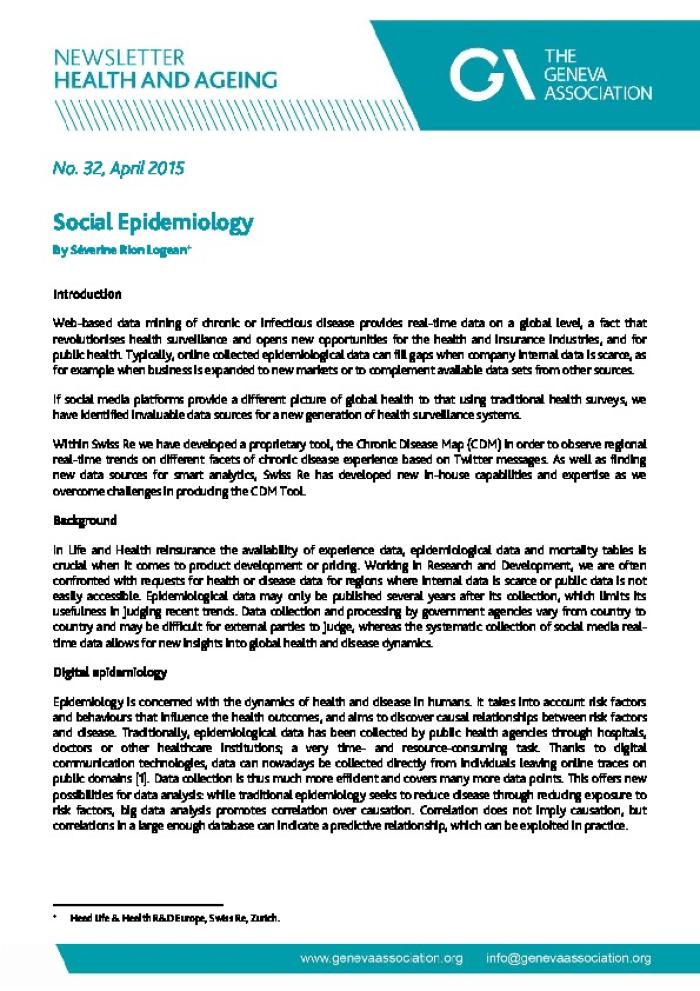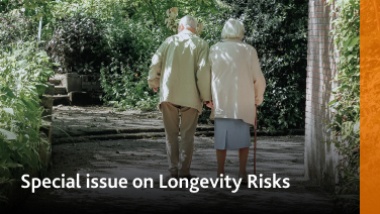Social Epidemiology
Article from Health and Ageing 32. Séverine Rion Logean shows how the web-based mining of chronic or infectious disease can provide real-time data on a global level, a fact that revolutionises health surveillance and opens new opportunities for the health and insurance industries.

No. 32, April 201 5 Social Epidemiology By S?verine Rion Logean+ Introduction Web-based data mining of chronic or infectious disease provides real -time data on a global level, a fact that revolutionises health surveillance and opens new opportunities for the health and insurance industries, and for public health. Typically, online c ollected epidemiological data can fill gaps when company internal data is scarce, as for example when business is expanded to new markets or to complement available data sets from other sources. If social media platforms provide a different picture of global health to that using traditional health surveys, we have identified invaluable data sources for a new generation of health surveillance systems. Within Swiss Re we have developed a proprietary tool, the Chronic Disease Map (CDM) in order to observe reg ional real -time trends on different facets of chronic disease experience based on Twitter messages. As well as finding new data sources for smart analytics, Swiss Re has developed new in -house capabilities and expertise as we overcome challenges in produci ng the CDM Tool. Background In Life and Health reinsurance the availability of experience data, epidemiological data and mortality tables is crucial when it comes to product development or pricing. Working in Research and Development, we are often confronted with requests for health or disease data for regions where internal data is scarce or public data is not easily accessible. Epidemiological data may only be published several years after its collection, which limits its usefulness in judging recent trends. Data collection and processing by government agencies vary from country to country and may be difficult for external parties to judge, whereas the systematic collection of social media real- time data allows for new insights into global health and disea se dynamics. Digital epidemiology Epidemiology is concerned with the dynamics of health and disease in humans. It takes into account risk factors and behaviours that influence the health outcomes, and aims to discover causal relationships between risk fact ors and disease. Traditionally, epidemiological data has been collected by public health agencies through hospitals, doctors or other healthcare institutions; a very time - and resource -consuming task. Thanks to digital communication technologies, data can nowadays be collected directly from individuals leaving online traces on public domains [1]. Data collection is thus much more efficient and covers many more data points. This offers new possibilities for data analysis: while traditional epidemiology seeks to reduce disease through reducing exposure to risk factors, big data analysis promotes correlation over causation. Correlation does not imply causation, but correlations in a large enough database can indicate a predictive relationship, which can be expl oited in practice. + Head Life & Health R&D Europe, Swiss Re, Zurich.





